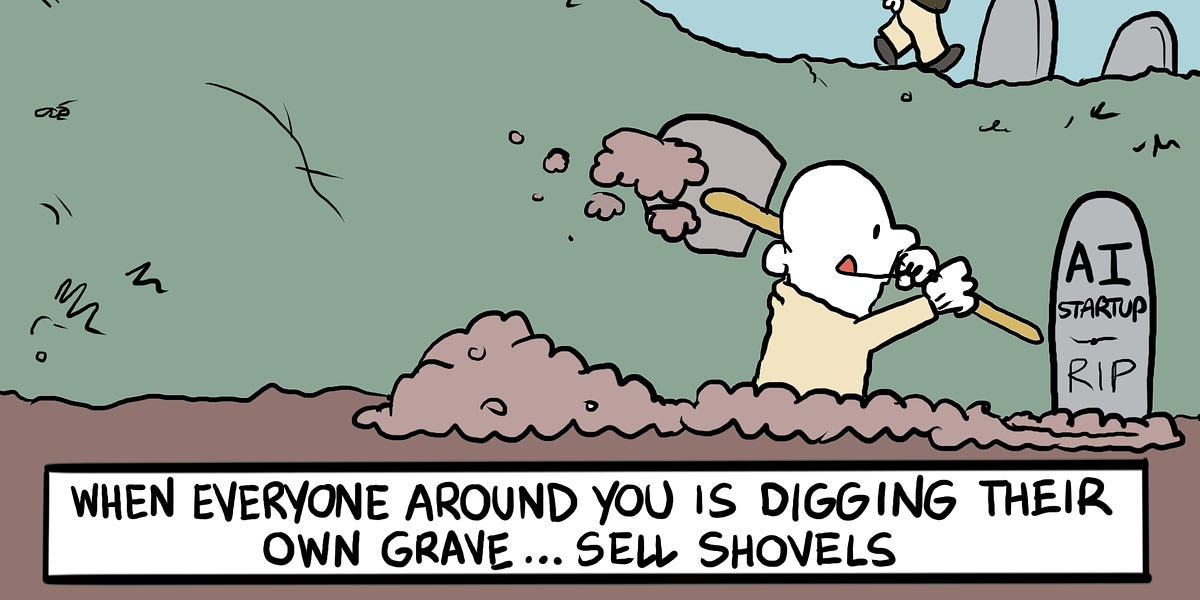Azure FinOps Master Program Now Available! Starting February 2026
Control Your Resources with FinOps
What happened this week:
How to get proper Resource Governance
Engineers vs FinOps about Cost Ownership
JPMorgan $17B Cloud Migration
Mention of Honour about Adidas 50% Kubernetes Cost Reduction
Job Offers
Professional Spotlight with one of nicest people and a KPI Expert
It’s been a heavy week, so much value is coming. Brace yourself:
Sponsor the Newsletter
Tagging
How to Get Resource Governance Right
Why We Tag Cloud Resources: Tagging helps categorize and group cloud resources. It aids in cost allocation and analysis. Complex organizations need tagging for detailed cost understanding.
The Dark Side of Tagging Governance: Requires ongoing governance and compliance. Engineers often see tagging as a burden. Maintaining tagging hygiene is time-consuming and costly.
Non-Taggable Cloud Resources: Some resources can’t be tagged, adding to complexity. Shared services and other items often resist tagging.
Alternatives to Traditional Tagging
Automated Tagging Enforcement: Policies to prevent the creation of untagged resources. Automatic deletion of untagged resources.
Tagging with CMDB: Use Configuration Management Database as a tagging source. CMDB is often managed outside of the FinOps team.
Tagging Using IaC: Integrate tags directly into Infrastructure as Code. It may not cover all resources and shared resources remain challenging.
Account-Based Groupings: Use subaccounts for cost grouping.It may not provide the necessary granularity for complex analyses.
Network-Driven Cost Allocation: Use network traffic to group costs. Innovative method for SaaS businesses focused on unit economics.
In conclusion, while tagging is valuable, considering these alternatives can help manage costs better.
FinOps Personas
Engineers vs. FinOps: Who Should Control Cloud Costs?
Cloud spending is rising. AI tech, like generative AI, uses lots of cloud. Many companies lack visibility and control of cloud expenses. Engineers, closest to cloud usage, could manage these better.
A CloudZero survey shared important findings: 58% think their cloud costs are too high. Only 42% can estimate spending areas. Better cost visibility improves productivity and reduces financial strain.
Engineers provide down-to-earth knowledge of costs. They know how cloud resources are used. They can quickly fix cost inefficiencies. They align projects with business goals.
But engineers alone handling costs isn’t easy. Total cost ownership can be overwhelming. A unified strategy among engineering, finance, and infra is key. Collaboration and clear data are necessary for success.
Finding the right balance is essential for efficient cloud cost management.
FinOps Foundation
Purchasing Commitment Discounts in AWS
Wondering how to get the best savings when using Amazon Web Services (AWS)? FinOps Foundation created a guide on purchasing commitment discounts in AWS to save money on cloud expenses.
Commitment Discounts: AWS offers Savings Plans and Reservations.
Savings Plans are flexible for EC2, Fargate, and Lambda. Reservations are specific to services like EC2.
Lifecycle Phases: Analyze: Review your current usage and spot savings opportunities. Approval: Get the necessary permissions from your organization. Purchase: Follow detailed steps to buy Savings Plans or Reservations. Check Utilization: Ensure you’re using the discounts and adjust if needed.
Tips for Success: Look at 24/7 on-demand usage for top savings candidates. Consider starting with a 1-year term to minimize risk. Regularly monitor and adjust based on usage patterns.
Roles and Responsibilities: Multiple team members like FinOps practitioners and IT should be involved. Ensure everyone understands who is responsible for which tasks.
Implementing these guidelines helps you manage your AWS costs better, leading to significant savings. For detailed information, check the Managing Commitment Discounts Overview on the FinOps Foundation website.
AWS
The End of Everything Cloud
AWS, the giant in cloud services, is making some big changes. They’re stopping support for many lesser-known services. What does this mean for users? Let’s break it down.
AWS Services Split into two Groups: Popular services. Examples: EC2, S3, DynamoDB. Vital for many businesses. And Lesser-known services. Examples: CodeStar, Cloud9, Workdocs. Not widely used.
Several services are being stopped. Cloud9 and CodeStar can no longer be used. More services may be discontinued soon.
AWS wants to make money. They focus on services that are popular and profitable. New services might not last long. Users are unsure about investing time in them.
AWS is cleaning up its offerings to focus on the most impactful services. This change could lead to fewer, but better, options in the future. Great article by Forrest Brazeal
Business
JPMorgan $17B Cloud Migration
JPMorgan Chase is moving most of its operations to the cloud. The bank spent $17 billion on IT this year.
JPMorgan has 32 global data centers. Plans to reduce to 17 modern, highly automated centers. They aim for up to 30% efficiency gains. Faster product release times are a key goal. JP Uses three major public clouds to avoid lock-in. Different apps need public or private clouds based on needs. They are already using AI for fraud detection and risk. Moving data to the cloud and creating a data-centric culture.
Mention of Honour Special
Deserved for stories that are inspiring for the FinOps community.
🎖️ Mention of Honour
Adidas Cutting Kubernetes Costs by 50% with VPAs & Karpenter
Adidas has shared its successful strategy for reducing Kubernetes server costs by up to 50% in AWS. Optimizing these clusters not only trims financial expenses but also leaves a reduced carbon footprint. Here’s a breakdown of how they did it:
Using Karpenter for EC2 Instances: Karpenter is an autoscaler that optimizes server usage. It selects suitable instances and removes underused nodes. Spot instances are used for cost efficiency.
Creating Vertical Pod Autoscalers (VPAs): VPAs adjust resource requests based on usage. Kyverno automatically generates VPAs for new deployments. This method is free, flexible, and easy to maintain.
Setting Default Resource Values: Controlled requests only, not limits, to handle resource spikes. Small minimum values allow scale-down. Max values are set to original requests for stability.
Scaling Down During Off-Hours: Kube downscaler reduces application replicas during non-office hours. Applications can scale down to as low as one replica.
Using KEDA for Custom Metrics: KEDA allows horizontal scaling based on external metrics. Enables applications to scale to zero replicas if needed.
Ensuring Node Removal: Kyverno policies prevent excessive Pod Disruption Budgets. Cleanup policies remove invalid PDBs daily.
Results
Achieved 30% savings in CPU and memory usage.
50% down on monthly costs for development and staging clusters.
Allowed application teams to opt-in for production optimizations.
These actions highlight an important journey towards cost-efficient and eco-friendly cloud usage.
Jobs
👩🏭 FinOps Job offers
Both Permanent links (i.e. FinOps Job site) and Offers I’ll find across the internet.
Professional Spotlight
Anderson Oliveira
One of the most kind people I know in the ecosystem. Always grateful, had the pleasure to e-meet him recently. Lots of knowledge on the business and unit economics side, with a blog site that is a valuable resource for this newsletter.
Bonus
🏆️ Quick Wins
For those seeking more content, this section will provide additional resources.
Events
Cloud Provider Announcements
Azure’s Carbon Optimization tool previews August 2024
New AWS CloudWatch dimensions for EC2 Capacity Reservations.
Microsoft FinOps Toolkit Update: New Features in Version 0.4!
Articles
Feedback
🗳️ Poll of the Week
That’s all for this week. See you next Sunday!
If you like the content, you can subscribe to receive it every week.
Let’s Collaborate!
Connect on Linkedin: I share valuable free content there. I am open to chatting with anybody interested in Cloud & FinOps.
Set up a Free Discovery Call: Let’s discuss how we can collaborate.
Sponsor this newsletter: Promote your company in this newsletter and reach the Cloud audience that wants to maximize business value and reduce costs.
PS1: Was this email forwarded to you? Subscribe here and get all editions!
PS2: Know someone who’ll enjoy this newsletter? Please forward it. You’ll make FinOps grow bigger.
PS3: I’ll do my best to provide you with the best content. However, some of it may slip. If you think something should have been included, please reach out on LinkedIn or REPLY to this email.





